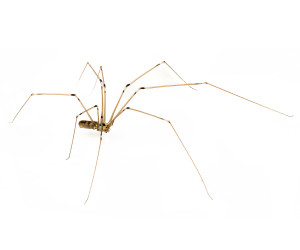Spiders
Pest Control: How to Get Rid of Spiders
Treatment includes the interior or exterior of the structure (or both), window frames, door frames, cracks, crevices, soffit and fascia, decking, and lawn furniture. It is highly recommended power washing the exterior be done before treatment as the treatment does not clean webbing that is already present. It is also recommended that window cleaning be done after the treatment and only windows, not frames. By cleaning the frames, the residual of the treatment is compromised and it may not last as long. The interior spider control procedure consists of ULV fogging in the attic, treatment of baseboards, windows, door frames, closets, and dark corners with residual, light aerosol. Please note, both the interior and exterior treatments can be performed separately or together depending on your unique situation.
How to Identify a Spider Infestation
- Spiders have eight legs, two body regions, and no wings or antennae
- Some spiders like moisture and are found in basements, crawl spaces and other damp areas of buildings. Others like dry, warm areas such as subfloor air vents, upper corners of rooms and attics. They hide in dark spaces
- Spiders are able to produce silk that is elastic, adhesive and strong. They use this silk to spin webs and to construct egg sacs and line spider dwellings. The size and shape of spider webs vary by species
How to Prevent a Spider Infestation
- Sweep or vacuum baseboards and corners of rooms often to remove food sources that other insects or spiders could feed on
- Remove spider webs when spiders are not in them
- Weatherstrip or caulk windows and doors, and repair screens
Possible Health Concerns
- Spiders do not transmit any diseases.
- Native species of spiders in Canada pose little to no health threat.
About Spiders
- Spiders feed on insects, other spiders and any other prey they are able to subdue
- Tens of thousands of spider species have been identified throughout the world
- Spiders do not have chewing mouthparts and commonly use digestive enzymes in their saliva to break down their prey before consuming it
- Females produce an egg sac from which spiderlings emerge. Spiderlings undergo a series of molts before eventually becoming adults
